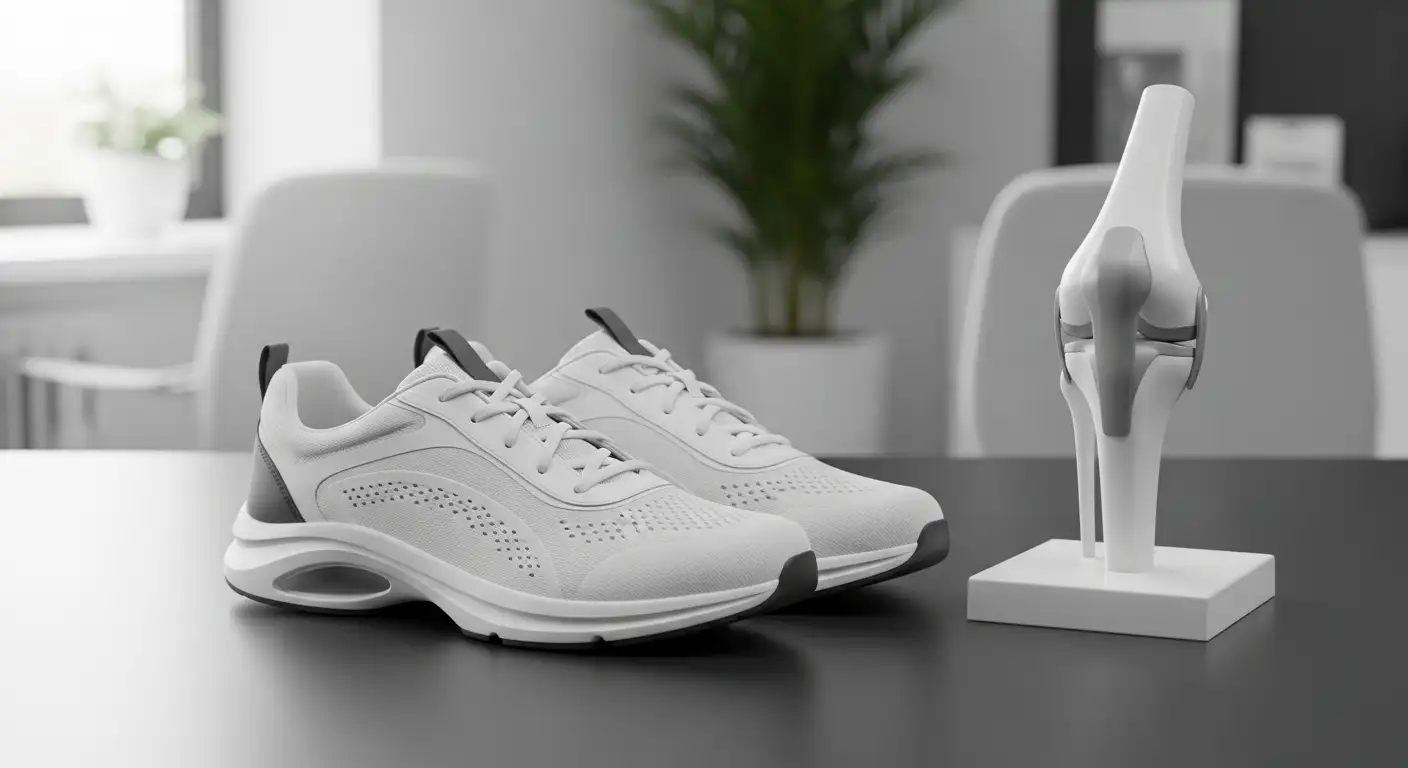
Understanding the Vastus Lateralis Muscle
Anatomy and Function
The vastus lateralis muscle is the largest component of the quadriceps group and is positioned on the lateral side of the thigh. This muscle collaborates with its counterparts in the quadriceps group to facilitate movement, strength, and stability in both the knee and hip joints. It plays a pivotal role in various activities, providing power and absorbing impact during actions like walking, running, and jumping. Understanding its anatomy is essential for anyone interested in a comprehensive vastus lateralis workout.
The vastus lateralis primarily functions as a knee extender and works alongside the vastus medialis to stabilize the knee joint [1]. Its effective functioning is vital for preventing injuries related to knee instability.
FeatureDescriptionLocationLateral side of the thighFunctionPrimary knee extension, joint stabilizationGroupPart of the quadriceps muscle groupActivitiesWalking, running, jumping
Importance of Vastus Lateralis in Knee Stability
The vastus lateralis plays an essential role in maintaining knee stability. As an extender of the knee, it provides the necessary strength to support dynamic movements, which are common during daily activities and sports. When this muscle is strong, it helps to prevent conditions such as patellar maltracking, which can lead to knee pain and dysfunction [(patellar maltracking)].
In conjunction with the vastus medialis, the vastus lateralis stabilizes the patella (kneecap) as it moves through its range of motion. This stabilization is crucial for proper joint alignment and functioning, significantly affecting knee health. When developing a workout routine focused on the vastus lateralis, including strengthening exercises—along with proper stretching techniques—can optimize performance and reduce the risk of knee issues.
For those interested in enhancing knee flexibility, exercises like knee bends can also be integrated into their fitness regimen. Understanding these dynamics is essential for effective vastus lateralis workouts or any knee-related training programs.
Common Knee Pain Issues
Understanding the common issues associated with knee pain is essential for anyone looking to maintain knee health, particularly for those focused on a vastus lateralis workout. Two prevalent issues are patellofemoral pain syndrome and overdevelopment or imbalance of muscles around the knee.
Patellofemoral Pain Syndrome
Patellofemoral pain syndrome is characterized by pain around the kneecap (patella) often exacerbated by activities that put stress on the knee joint, such as running, jumping, or climbing stairs. In individuals with this condition, the vastus lateralis muscle may contract prematurely compared to the vastus medialis, potentially leading to misalignment and pain in the knee [2].
While the previously held belief linked this premature activation to knee pain, recent studies have shown inconsistent timing of muscle activation in healthy individuals, challenging the straightforward association between vastus lateralis activation and knee pain. Therefore, a comprehensive assessment of knee mechanics is crucial for effective diagnosis and treatment.
Overdevelopment and Imbalance
Overdevelopment of the vastus lateralis can lead to anterior knee pain syndromes. This condition is often associated with abnormal patellar movement which may contribute to joint instability and discomfort [1]. An imbalance between the vastus lateralis and its counterpart, the vastus medialis, can exacerbate these issues.
A broader understanding of the balance between these muscles is essential for effective rehabilitation and training strategies. Studies show that both the vastus lateralis and vastus medialis exhibit significant muscle activation during compound exercises like the leg press, indicating their critical role in knee function [3].
Muscle GroupActivation Level during Leg PressVastus LateralisHighVastus MedialisHighRectus FemorisModerate
Enhancing muscle coordination between the vastus lateralis and vastus medialis, especially through exercises that promote stability, can help mitigate knee pain. Training on unstable surfaces, for example, has been shown to increase muscle activity and improve the vastus medialis oblique/vastus lateralis ratio, addressing potential imbalances [4].
By recognizing these issues, individuals can better approach their workout plans, implementing exercises and stretches such as knee bends and targeted stretches for knee relief.
Strengthening the Vastus Lateralis
To enhance knee stability and alleviate potential pain, focusing on strengthening the vastus lateralis muscle is crucial. This section provides insights into effective exercises and training techniques designed to promote muscle growth in this key area.
Effective Exercises
Several exercises specifically target the vastus lateralis and contribute to overall leg strength. Here is a list of effective exercises that can be integrated into a vastus lateralis workout:
ExerciseDescriptionClose Stance Leg PressPerforms leg press with feet together to emphasize the vastus lateralis.Dumbbell LungesEngages the entire leg while also focusing on the outer thigh.Barbell Front SquatTargets the quadriceps and emphasizes the vastus lateralis.Leg ExtensionsWhen performed with toes pointed inward, this exercise stresses the outer thigh more effectively. (SET FOR SET)
These exercises not only build the vastus lateralis but also support overall leg strength and functionality.
Training Techniques for Muscle Growth
Implementing proper training techniques can maximize the effectiveness of the workout. It is essential to consider the following strategies to promote muscle growth in the vastus lateralis:
Incorporating these exercises and techniques into a regular workout routine will promote stronger and more resilient vastus lateralis muscles, ultimately contributing to improved knee function and reduced pain. For further insights on maintaining knee health, explore more about knee bends and other injury prevention strategies.
Stretching for Vastus Lateralis
Importance of Flexibility
Flexibility plays a vital role in maintaining overall knee health and function. Tight vastus lateralis muscles can lead to discomfort and limit mobility. This tightness can stem from overuse through activities such as walking or running, or underuse resulting from prolonged periods of sitting. Stretching and myofascial release techniques are effective ways to promote muscle relaxation and enhance flexibility. Without proper flexibility, individuals may experience knee pain and a higher risk of injuries such as strains or tears.
Best Stretches for Outer Thigh Relief
Incorporating specific stretches into a routine can significantly improve flexibility in the vastus lateralis muscle and promote better knee function. Here are some effective stretches:
Stretch NameDescriptionKneeling Quad StretchBegin in a kneeling position, bend one knee, and grasp your ankle. Pull the ankle toward the buttock while keeping your hips pushed forward for a gentle stretch in the front of the thigh.Hero PoseSit on your heels, separate your feet, and lower your hips between your feet. This position stretches the quadriceps and promotes knee mobility.Reclined Hero PoseFrom the Hero Pose, lean back to rest on your forearms, or go deeper to lie flat on your back. This stretch not only targets the quadriceps but also enhances overall thigh flexibility.Standing Quad StretchStand on one leg, bend the opposite knee, and bring your heel toward your glutes. Hold the ankle to deepen the stretch while keeping your knees close together.
These stretches can relieve tension in the outer thigh and promote flexibility. Incorporating them regularly can help counteract poor posture, increase range of motion, and ease tightness in the vastus lateralis muscle. It's also beneficial to pair these stretches with strengthening exercises for optimal results, particularly exercises targeting the outer thighs to achieve a well-defined leg appearance [7].
To learn more about proper movements to reduce knee discomfort, check out our articles on knee bends and how to instantly fix knee pain when going up and down stairs.
Preventing and Managing Knee Pain
The vastus lateralis muscle plays a vital role in knee stability and function. Proper care and management can help prevent injuries associated with this muscle and support overall knee health.
Avoiding Muscle Strains
Muscle strains are common, especially in the quadriceps, which includes the vastus lateralis. To prevent strains, individuals should focus on gradual increases in exercise intensity. Warming up properly before engaging in physical activity is essential. Dynamic stretching, such as knee bends and leg swings, can prepare the muscles for exertion.
When strength training, it is crucial to use proper form and technique. Overdevelopment of the vastus lateralis relative to the vastus medialis can lead to instability in the knee joint, resulting in anterior knee pain. This imbalance can be addressed with targeted exercises. Regularly incorporating exercises for upper glutes and lateral stability exercises can promote a more balanced muscle development.
Prevention StrategiesDescriptionWarm-Up ExercisesPerform dynamic stretches and light cardio to prepare for activity.Gradual Intensity IncreaseIncrease the difficulty and load of workouts progressively to avoid overstraining.Strength BalancingInclude exercises that target both vastus lateralis and vastus medialis.Proper TechniqueFocus on form to prevent strain during lifting or athletic activities.
For muscle strain recovery, follow the RICE protocol: Rest, Ice, Compression, and Elevation. Abstaining from activity for at least three weeks is recommended before returning to regular exercise routines [6].
Recovery and Injury Prevention
Recovery plays an essential role in managing knee health and preventing future injuries. It is advisable to incorporate regular stretching to improve flexibility in the quadriceps, particularly the vastus lateralis. Emphasizing stretches such as the glute med stretch and gastroc stretch can enhance muscle elasticity and reduce tightness.
Strengthening exercises are also significant in injury prevention. Building strength in the quadriceps not only aids in athletic performance but also supports knee stability. Balanced training between the vastus lateralis and vastus medialis is crucial to maintain proper patellar alignment and prevent conditions like patellar maltracking [1].
In case of knee discomfort or tightness, it is important to assess the situation thoroughly. Utilizing appropriate knee braces, such as those for an ACL tear (knee brace for acl tear), may offer additional support during recovery phases. Always consult a healthcare professional when there is persistent knee pain to determine the best course of action.
By adopting these strategies, individuals can effectively manage knee pain and promote overall joint health while engaging in a comprehensive vastus lateralis workout.
Tips for Optimal Vastus Lateralis Training
To achieve the best results from a vastus lateralis workout, proper form and execution are essential. In addition, understanding safety precautions will promote effective training while minimizing the risk of injury.
Proper Form and Execution
The vastus lateralis is crucial for knee stability and movement. Maintaining proper form during exercises ensures that the vastus lateralis is effectively targeted. Here are some key tips:
ExerciseTarget AreaClose Stance Leg PressVastus Lateralis, QuadricepsDumbbell LungesVastus Lateralis, GlutesBarbell Front SquatQuadriceps, CoreDumbbell Bulgarian Split SquatVastus LateralisMachine Hack SquatQuadriceps, Vastus LateralisSissy SquatVastus Lateralis
Safety Precautions and Recommendations
Prioritizing safety during workouts is vital to prevent injuries. Here are some recommendations:
By focusing on the proper execution of exercises and adhering to safety measures, individuals can optimize their vastus lateralis workouts and support overall knee health. Techniques such as utilizing a knee brace for ACL tear may also aid during recovery or when returning to training after an injury.
References
[2]:
[3]:
[4]:
[5]:
[6]:
[7]:





